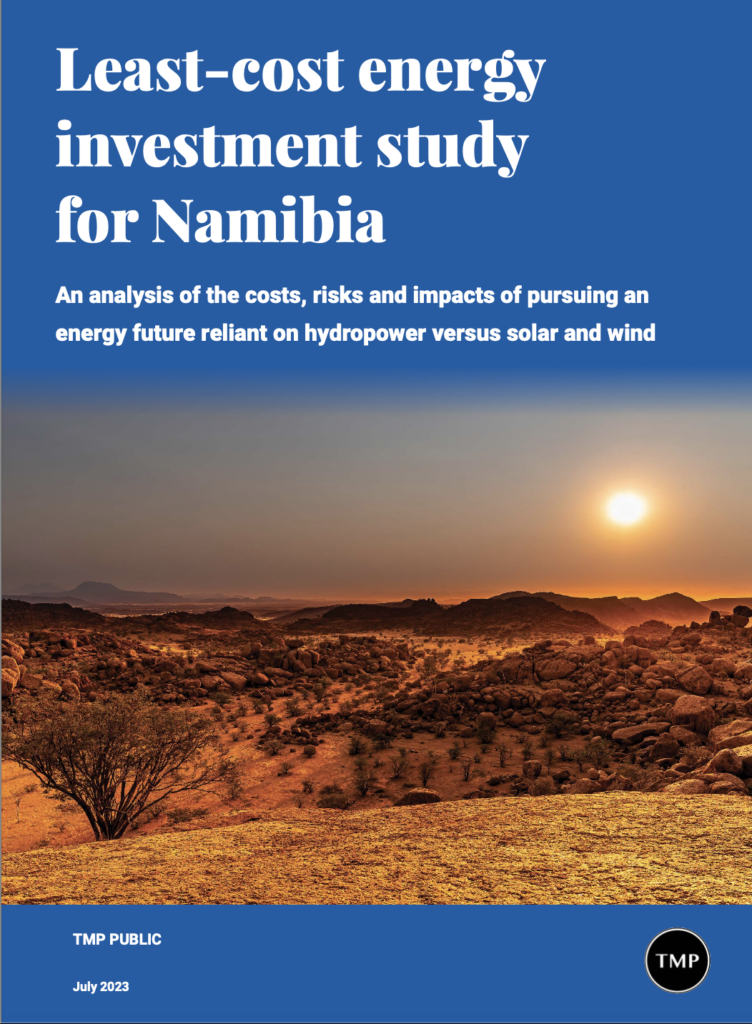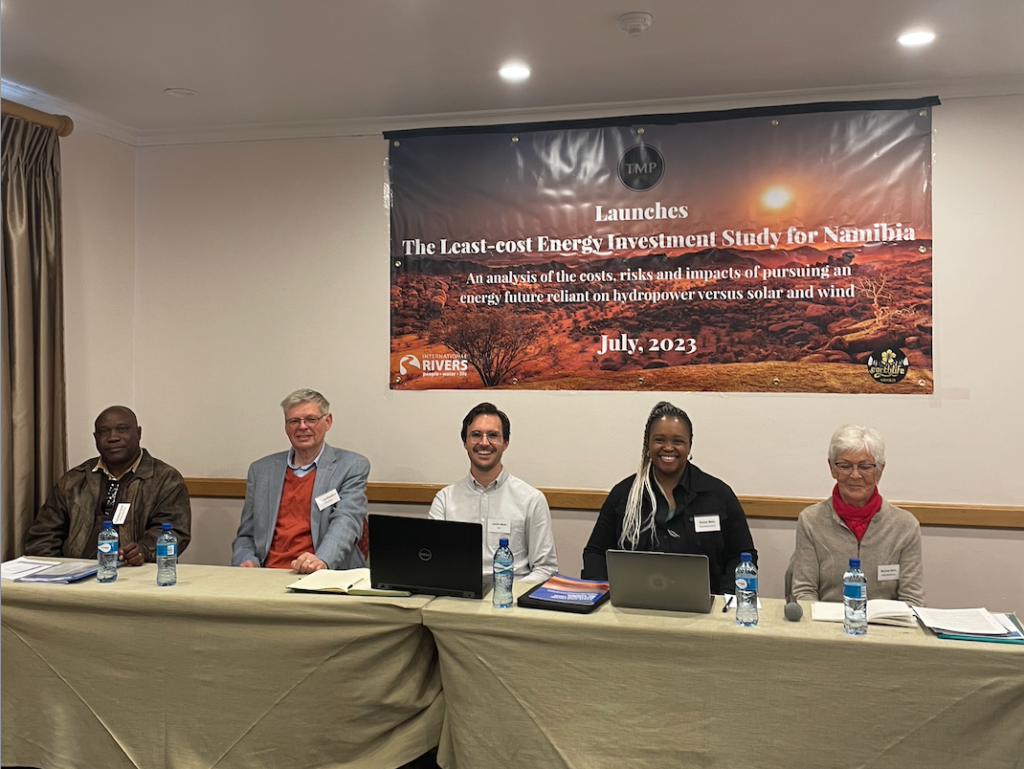An analysis of the costs, risks and impacts of pursuing an energy future reliant on hydropower versus solar and wind

Background
Namibia currently has a small energy system that is dominated by its 347 megawatts (MW) Ruacana hydropower plant. The country is also considering an additional hydropower plant, the Baynes Hydropower Project on the Kunene River. The Kunene River basin is heavily climate-exposed and extreme drought periods have already created energy shortfalls for Namibia because of its over-reliance on the Ruacana hydropower plant. Namibia is one of the driest countries south of the Sahara and has been experiencing persistent drought conditions for more than seven years. These events are likely to become more frequent and severe over the coming decades, exacerbated further by competing upstream water demands.
“Namibia should reconsider its reliance on hydropower and fossil fuels in favour of a climate-friendly and innovative approach that makes use of its abundant renewable resources and avoids negatively impacting communities,” says Siziwe Mota, Africa Program Director at International Rivers.
Report’s Key Findings:
- Solar and wind with storage make up the largest share of Namibia’s energy future under a least-cost energy investment scenario to 2030 and 2040, cumulatively accounting for 70% and 77% of the country’s installed capacity, respectively.
- Namibia has widespread high-quality solar and wind resources in areas that avoid dense populations, protected areas, and sensitive land uses. Nearly 125,000 km2 of the most suitable solar and wind areas also pose a relatively low social risk.
- The Baynes Hydropower Project is heavily susceptible to delays because of high social and environmental risks and is unlikely to come online before 2031. By contrast solar and wind options could be developed in less than half the time.
- Electricity from Baynes would cost at least 66-166% more than existing domestic wind and solar alternatives by 2031. These high costs would likely drive up the price of electricity for Namibia’s energy consumers.
- Drought events are likely to become more frequent and severe by 2030, with knock-on effects for Namibia and the region, which uses hydropower extensively to generate energy for export. Solar and wind offer resilience to these climate impacts.
- The domestic job creation potential of solar and wind is more certain than it is from Baynes.
- The Epupa site was found to have greater negative impacts, but Baynes would still flood indigenous dwellings, critical grazing land and culturally significant sites.
Links below to the press release and to download the full report and the full list of key findings and recommendations in the policy brief.
Launch Panel Discussion

